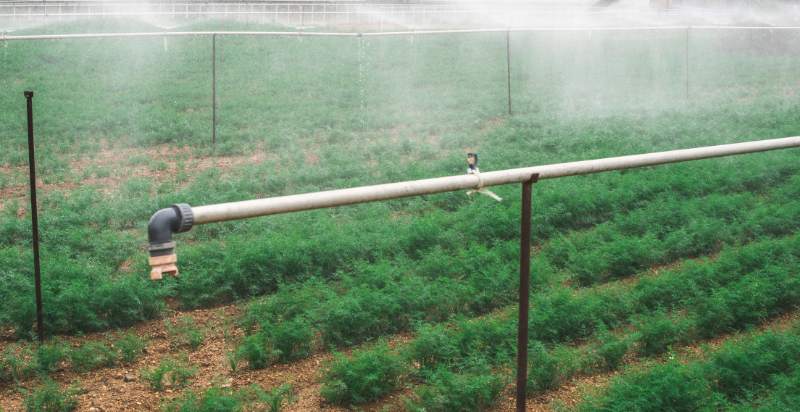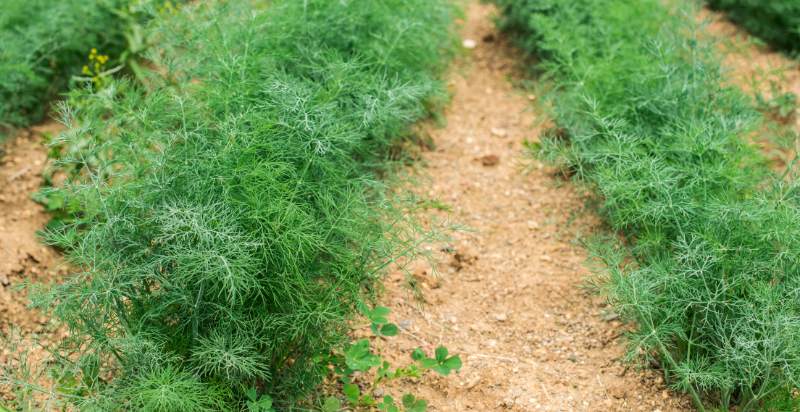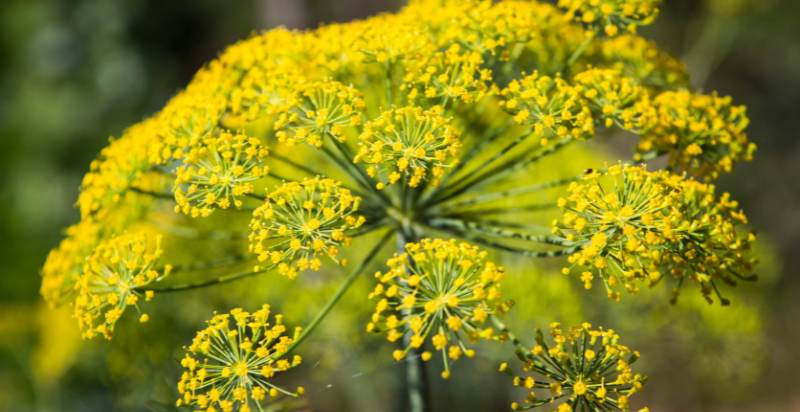Dill, also known as Anethum graveolens, is an annual herb in the celery family Apiaceae. It is a popular culinary herb-flavoring soup, salads, and sauces. Dill has been cultivated for hundreds of years for its aromatic leaves and seeds, which are used in many dishes around the world. It is native to the Mediterranean but grows in temperate climates across Europe, the Americas, and Asia.
History of Dill:
The name “dill” comes from the Old Norse word “dylle,” which means to soothe or ease. The ancient Greeks and Romans used dill in a variety of dishes as well as for medicinal purposes. In medieval Europe, it was a popular seasoning for bread and soups. It was also used as an ingredient in love potions! During the Middle Ages, monasteries grew dill in their gardens, recognizing its healing qualities.
Types of Dill:
There are several varieties of dill, each with unique characteristics and uses. The most common type is the annual herb Anethum graveolens, which has feathery leaves and a strong, pungent aroma. Other varieties include:
- Curled-leaf dill (Anethum Sowa).
- French dill (Anethum graveolens var. angustifolium).
- Fern-leaf dill (Anethum graveolens fern left).
Description of Dill:
Dill is an upright herb that grows up to three feet tall with hollow stems and blue-green linear leaves. The leaves have a mild aroma reminiscent of caraway; when crushed, they release aromas of citrus and aniseed. Dill has yellow flowers which bloom from mid-spring to late summer. The seeds are small, oval, and brownish.

Uses of Dill:
Dill’s flavorful leaves, stems, and seeds can be used fresh or dried in various dishes. The leaves are often used as an herb that adds flavor to salads, soups, and sauces. The stems can be pickled or added to stocks for extra flavor. The seeds have a warm, spicy taste and are often included in curries and other Eastern dishes.
Dill is also frequently used as an ingredient in fish and vegetable dishes, especially in Scandinavian cuisine. In addition to its use as a culinary herb, dill has various medicinal uses due to its anti-inflammatory properties. It is thought to help with digestive issues, as well as respiratory problems.
Cultivation of Dill:
Dill can be grown from seed or cuttings in a sunny position in fertile soil with good drainage. The plants should be spaced about 15 cm apart and given plenty of water during dry spells. Dill can also be grown indoors in containers, requiring regular watering and lots of sunlight to thrive. Once the seeds have matured, they can be harvested and dried for later use.
Nutrition of Dill:
Dill is an excellent source of vitamins A, C, and K and minerals such as iron, calcium, and manganese. It also contains flavonoids and essential oils, which have antioxidant properties. Dill is low in calories and fat, so it is a great addition to any diet.
Health Benefits of Dill:
Dill has long been used in traditional medicine to treat various ailments. It is thought to have anti-inflammatory, antispasmodic, and antimicrobial properties, which may help reduce the symptoms of colds, flu, and digestive problems. Dill has also been beneficial for reducing blood pressure, improving digestion, and aiding weight loss.
How to Plant Dill?
Planting dill is relatively easy, whether in a planter or the garden. It’s an herb that can be used to season dishes and make them delicious, with earthy tones and hints of licorice. Proper planting techniques help ensure success for its growth and harvest. Here’s what you need to know about how to plant dill:
Types of Dill:
The most commonly cultivated types of dill are either annual or biennial varieties. Annual dill will flower and seed within one season; it will die off by wintertime. Biennial dill may not flower until the second year, but it has more flavor than annual varieties. Choose whichever type best suits your needs.
Location:
Dill plant loves full sun, so choose a spot in your garden or planter that receives at least six hours of direct sunlight daily. The soil should be rich and well-draining; adding some organic material, such as compost, is best before planting.
Planting:
Dill is best grown from seed, which can be sown directly in the soil after all danger of frost has passed. Dill grows best in full sun and in well-drained soil with a pH between 6.0 and 7.5. The seeds should be planted about ½ inch deep and spaced at least 18 inches apart in rows that are 24 inches wide. Once seedlings reach 3–4 inches tall, thinning should take place so that only the strongest plants remain; those remaining should be spaced 10-12 inches apart.
How to Care for Dill?
- Watering: Dill plants thrive in moist soil, so water them regularly. During dry spells, provide a deep watering once per week to keep the soil hydrated. Keep weeds away from the dill to reduce competition for moisture and nutrients.
- Fertilizing: Fertilize monthly with a balanced fertilizer or an organic compost tea. This will help boost the growth and flavor of the leaves.
- Pruning: As the dill grows taller (up to 5 feet tall!), it may need some pruning or staking for support. Prune off any yellowed or dead foliage and snip off flowers when they appear; this will encourage more leaf production on your plants.
- Harvesting: You can start harvesting dill leaves as soon as they are big enough to use. The flavor and aroma of the leaves will be most intense just before flowering. Cut dill leaves with scissors or pruners, taking no more than one-third of the plant at a time. For seeds, please wait until the seed heads turn brown; then, cut them off and dry them in a cool place indoors.

Preventions From Pests And Diseases:
Keep an eye out for pests such as aphids, spider mites, and whiteflies, which can infest dill plants. If spotted, remove them with water from the hose or use insecticidal soap. For diseases such as powdery mildew and downy mildew, practice good cultural practices to improve air circulation around the plants (e.g., avoiding overcrowding) and apply organic fungicides if necessary.
How to Harvest?
Dill leaves can be harvested as soon as they are big enough to use. For the best flavor, harvest dill leaves just before flowering; this is when the flavor and aroma of the leaves will be most intense. Cut dill leaves with scissors or pruners, taking no more than one-third of the plant at a time. For seeds, please wait until the seed heads turn brown; then, cut them off and dry them in a cool place indoors.

How to Store Homegrown Dill?
Once harvested, dill can be used fresh or stored for later use. To store fresh dill, wrap it in a damp paper towel and place it in a sealed plastic bag; this will help keep its flavor and aroma for up to 10 days. Alternatively, you can freeze dill by chopping the leaves and stems and placing them in an airtight container or freezer-safe bag; frozen dill will last up to six months. Finally, you can dry the leaves and store them in an airtight jar for up to one year.
Using Dill:
Now that you know how to plant dill, it’s time to enjoy its flavor! Freshly cut leaves make great additions to salads, sandwiches, and dips. Add them to sauces or stuffing mixes for added flavor. The seeds are used in pickling brines, spice rubs, and teas. Once it flowers, the blossoms can be used to make a refreshing herbal tea.

Risks:
Be sure to avoid consuming dill in large quantities, as it can cause headaches, dizziness, and nausea. While dill is generally considered safe for pregnant women, discussing it with your healthcare provider before using medicinal amounts of this herb is best.
Conclusion:
Dill is a flavorful and aromatic herb that can be used in many recipes or enjoyed independently. You can easily grow your own dill at home with proper planting and care techniques. However, be cautious when consuming this herb in large quantities, as it may cause adverse effects. With the right information and some patience, anyone can enjoy the delicious flavor of fresh-picked dill!
The key is providing your dill plants with the right environment to get the best yield of leaves and seeds. Ensure they are planted in a sunny spot; water them regularly; fertilize monthly; prune as necessary, and prevent pests or diseases. With proper care, you can enjoy fresh-picked dill for months! Enjoy!
- Everything You Wanted to Know About Red Tamarillos - June 2, 2025
- A Guide to Tulips: Everything You Need to Know & More… - June 2, 2025
- Guanabana: Description, Flavor, Benefits, And Uses - May 27, 2025

2 thoughts on “Planting, Growing, and Harvesting Dill”
Comments are closed.